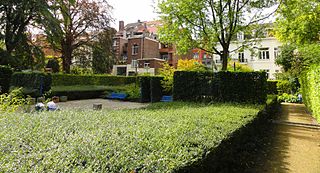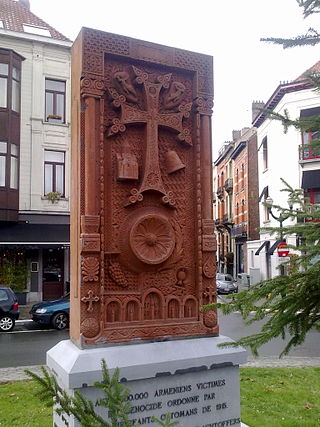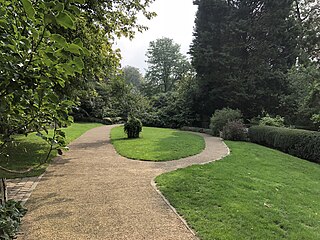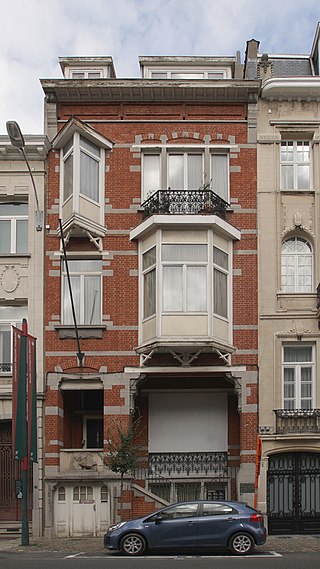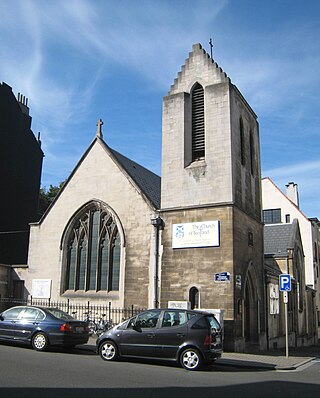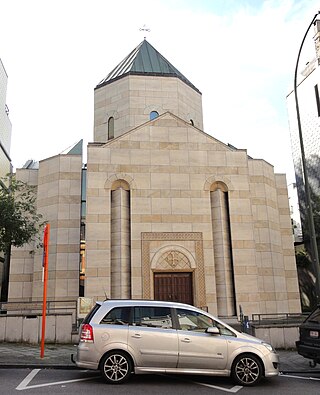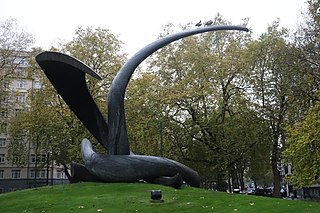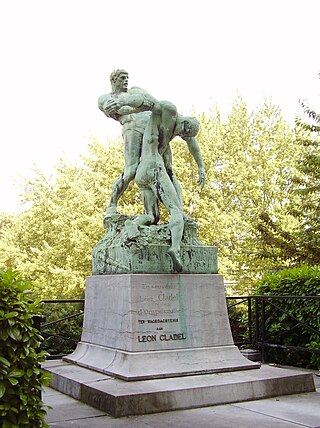Self-guided Sightseeing Tour #1 in Ixelles - Elsene, Belgium
Legend
Tour Facts
3.2 km
59 m
Experience Ixelles - Elsene in Belgium in a whole new way with our free self-guided sightseeing tour. This site not only offers you practical information and insider tips, but also a rich variety of activities and sights you shouldn't miss. Whether you love art and culture, want to explore historical sites or simply want to experience the vibrant atmosphere of a lively city - you'll find everything you need for your personal adventure here.
Individual Sights in Ixelles - ElseneSight 1: Église Notre-Dame de l'Annonciation - Onze-Lieve-Vrouw Boodschapkerk
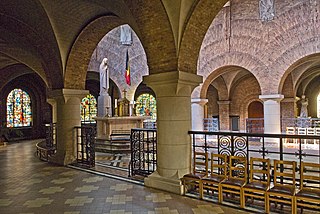
The Church of Our Lady of the Annunciation is a religious building located in the heart of the Berkendael district of the municipality of Ixelles, Brussels. It was built at the beginning of the twentieth century, as a place of worship for a new Catholic parish for a rapidly developing district. The church is in the neo-Romanesque style tinged with Art Deco influences, built according to the plans of the architect Camille Damman.
Wikipedia: Église Notre-Dame-de-l'Annonciation d'Ixelles (FR)
Sight 2: Parc Régional Abbé Froidure - Gewestelijk Park Abt Froidure
The Abbot Froidure Regional Park, also known as Abbot Froidure Park or Venerable Froidure Park, is a small public park garden located on the territory of Forest and Ixelles in the Brussels-Capital Region.
Sight 3: Armenian Genocide memorial of Brussels
The Armenian Genocide Monument in Ixelles is a khachkar-type monument commemorating the Armenian Genocide in Ixelles, Belgium.
Sight 4: Parc Tenbosch - Tenboschpark
Tenbosch Park or Tenbos Park, is a public park in the municipality of Ixelles in Brussels, Belgium. Although relatively small with an area of 2 ha, it is a landscaped park popular among local residents. It is surrounded by a wall and offers an unexpected oasis of calm in a busy district.
Sight 5: Musée Meunier Museum
The Meunier Museum, in Ixelles, is housed in the house-studio of Constantin Meunier (1831-1905), bought by the State in 1936 with all the works it housed, and is entirely dedicated to him.
Sight 6: Saint Andrew's Church
St Andrew's Church in Brussels (Ixelles) is a congregation in membership of both the Church of Scotland and the United Protestant Church in Belgium (EPUB/VPKB) Services are conducted in English.
Sight 7: Apostolic Armenian Church Saint Mary Magdalene
The Church of St. Mary Magdalene is an Armenian apostolic church building in the municipality of Ixelles, Belgium, in the Brussels-Capital Region. The church is located on the Kindermansstraat.
Sight 8: Phoenix 44
Phénix 44 is a work by Olivier Strebelle, located on Avenue Louise in Brussels. This work was created to commemorate the liberation of Brussels in 1944 by the British.
Sight 9: Jardin du Roi - Koningstuin
The King's Garden is a public garden located in Brussels, Belgium.
Share
How likely are you to recommend us?
Disclaimer Please be aware of your surroundings and do not enter private property. We are not liable for any damages that occur during the tours.
GPX-Download For navigation apps and GPS devices you can download the tour as a GPX file.
